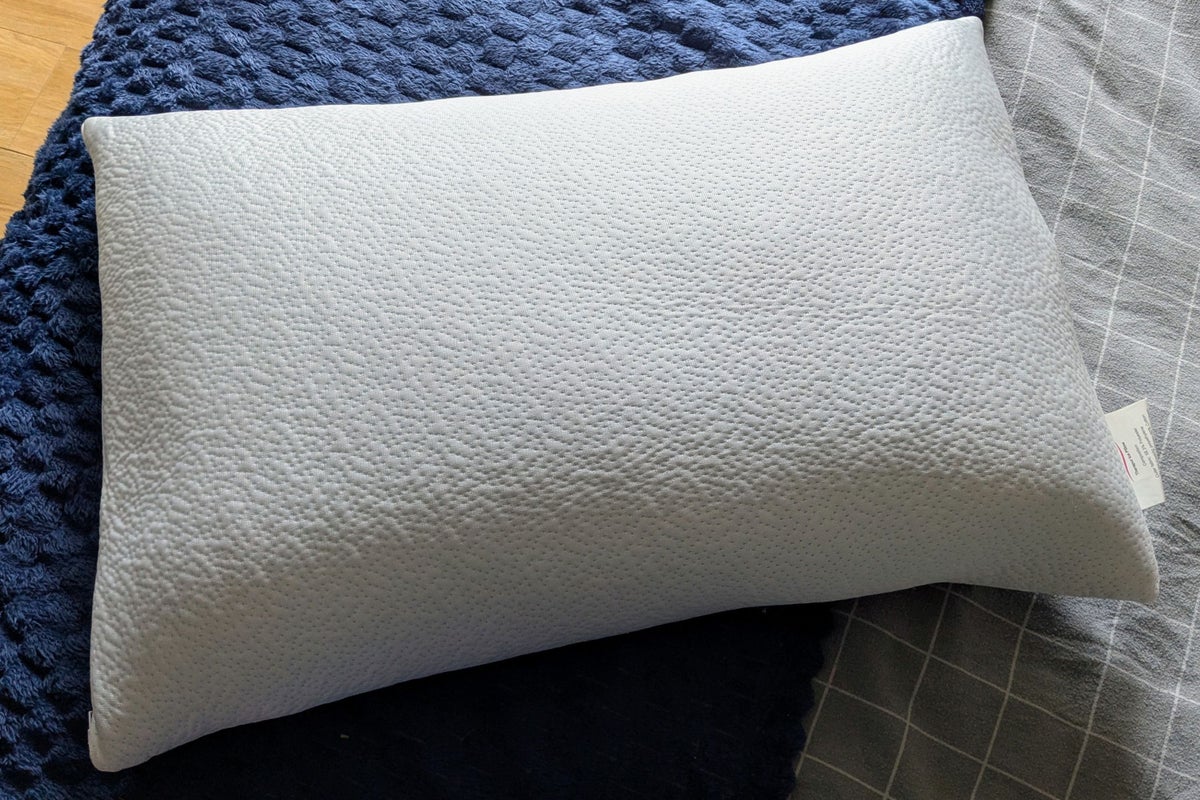
Dialling in your pillow can be the difference between waking refreshed and nursing a cricked neck. Memory foam remains my go-to for extra neck support and comfort because it contours where you need it, holds its shape through the night and, in 2025, is far cooler and more breathable than it used to be.
As a journalist who regularly reviews sleep tech, I look for three things first: neutral spinal alignment, pressure relief and temperature regulation.
Plus, orthopaedic guidance aligns with my findings: side and back sleepers typically benefit from a slightly firmer, higher-loft pillow to keep the cervical spine in a neutral position; go too lofty or too rigid and you risk aggravating pain. Front sleepers, meanwhile, usually need a lower profile to avoid overextension. The sweet spot depends on your build and mattress, which is why adjustability matters, and why memory foam pillows can be a smart choice – they contour to your shape, balance support with cushioning, and often allow fine-tuning of height or firmness to achieve that personalised fit.
The latest standouts use open-cell or perforated foams, cooling gels or graphite infusions, and smarter covers that wick heat and wash well. Many are CertiPUR‑EU certified and offer adjustable loft via removable foam layers or fills. In the picks below, I’ve prioritised genuine support, consistent airflow and long-term comfort over gimmicks. Most importantly, these pillows are so good that you don’t notice them at all, providing healthy, restorative sleep.
How I tested
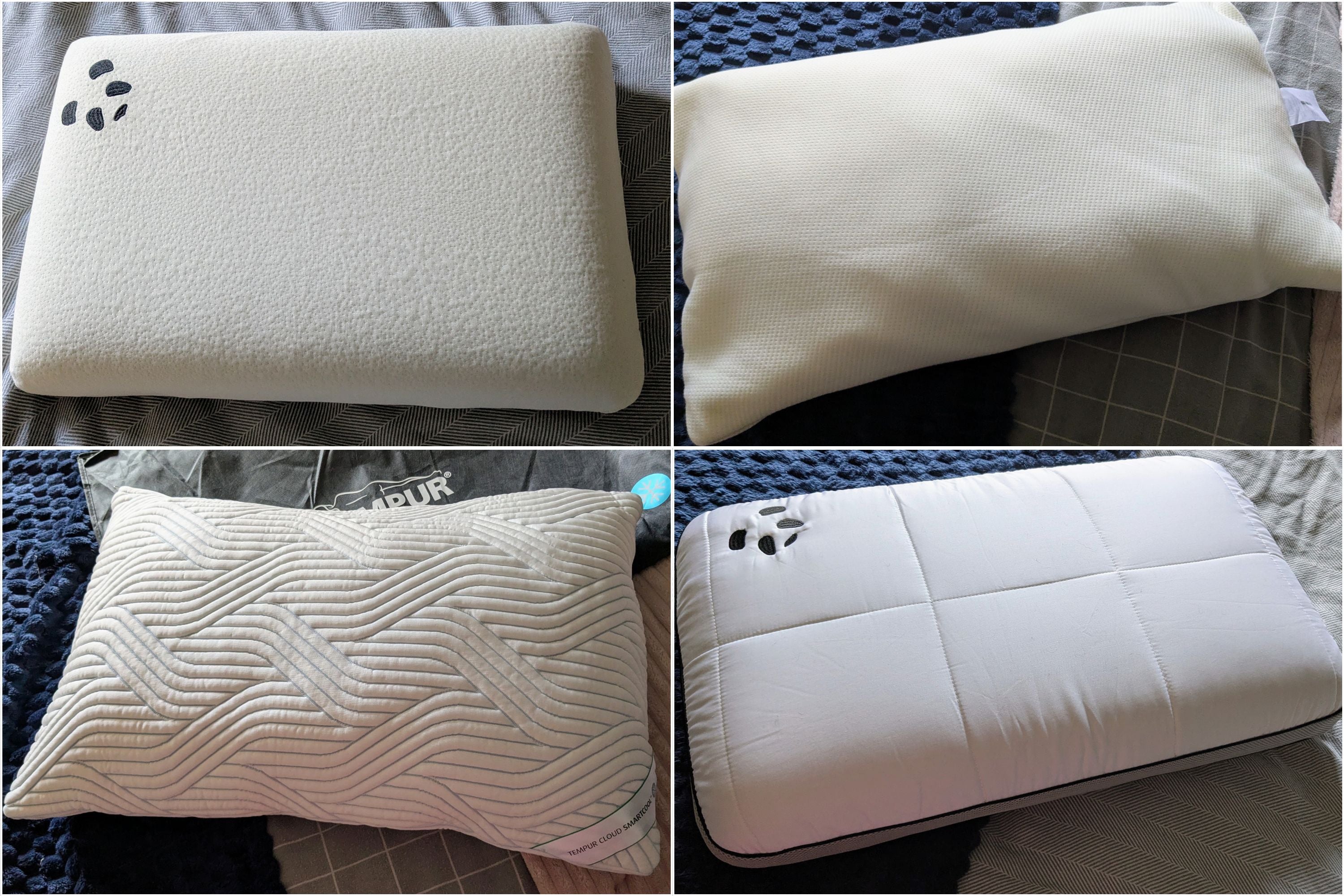
I tested these pillows for several weeks, rotating through side, back and stomach positions. I kept a sleep log, noting the quality of sleep every morning. To determine the best memory foam pillow, I evaluated each one based on key criteria, including:
- Support: This has a huge impact on the quality of sleep and how you feel waking up. I tracked the changes in spinal alignment and morning stiffness, noted any pressure at the ear/jaw/shoulder, and checked for key indicators of support like overnight loft retention and edge support.
- Temperature regulation: I paid close attention to heat management, so I assessed each pillow on warmer and cooler nights, noting surface feel, breathability and how often I needed to flip the pillow. I also noted off‑gassing in the first 24 hours. For adjustables, I evaluated ease of tuning and clumping over time.
- Quality and set-up: Finally, I weighed materials, certifications, care, and price to judge long-term value, docking marks for heat build-up, collapse, or fussy maintenance.
The best memory foam pillows are:
- Best overall – Simba hybrid pillow: £109, Simbasleep.com
- Best budget – Slumberdown memory foam plus pillow: £22.60, Slumberdown.co.uk
- Best luxury – Tempur cloud smartcool pillow: £139, Uk.tempur.com
- Best for side sleepers – Panda hybrid bamboo pillow: £76.46, Pandalondon.com
Simba hybrid pillow
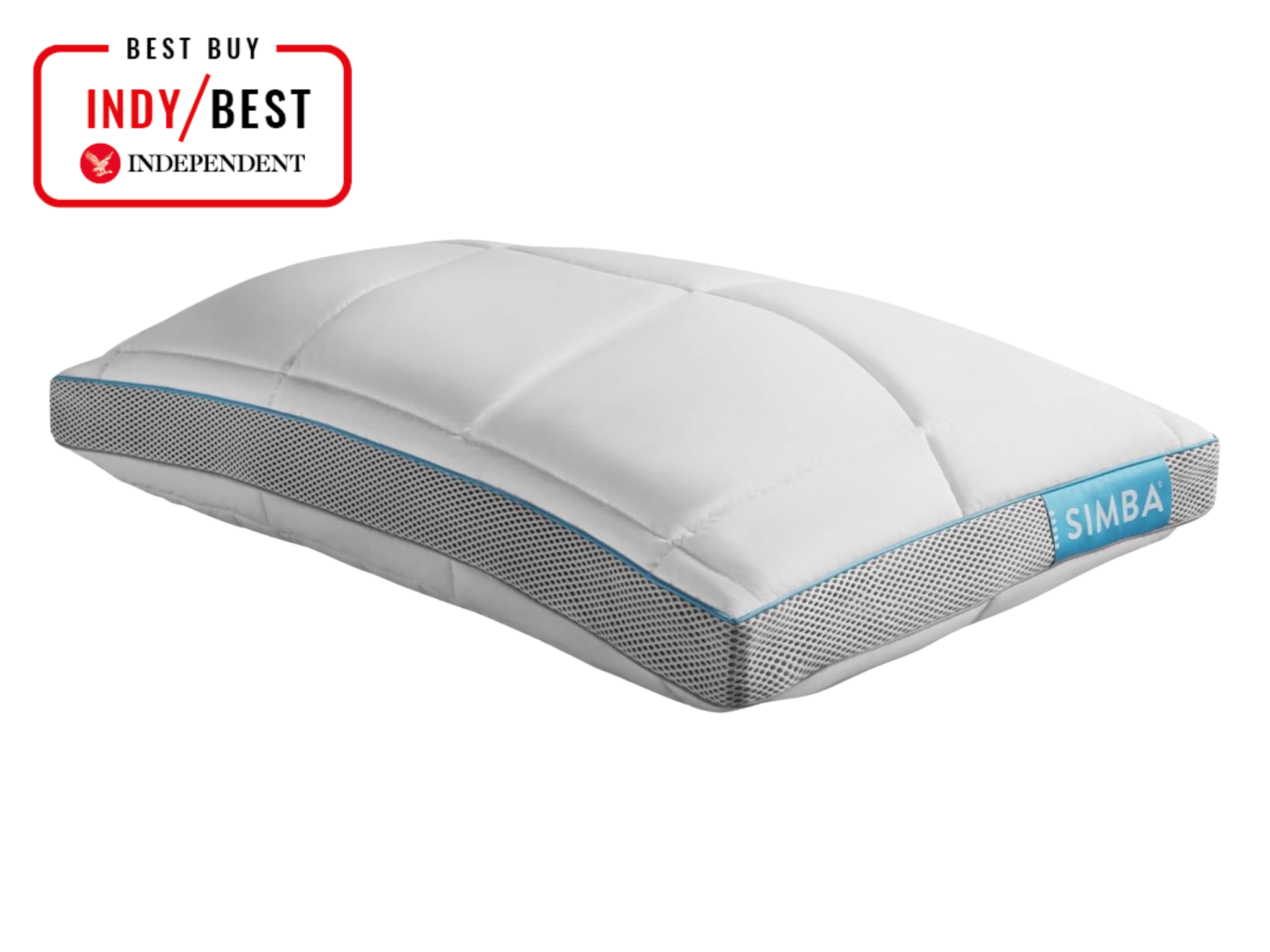
Best: Memory foam pillow overall
Size: 50cm x 75cm
Fill: Memory foam cubes
Cover: Cotton
Care: Removable, machine-washable cover; fill not washable
Loft: Adjustable
Why we love it
- Adjustable loft and firmness
- Cooler and more breathable than most memory foam pillows
- Two-sided, machine-washable cover
Take note
- Needs occasional fluffing to prevent clumping
- Pricey for a single pillow
If you're looking for a pillow that perfectly suits your body and sleep style, this is the one to beat. Simba’s foam cubes let you adjust height and firmness with perfect precision, and the side mesh keeps air moving so it doesn’t trap heat.
In testing, I adjusted the firmness by a couple of handfuls for side sleeping and woke without the neck tightness I’d experienced with a lot of denser, single-piece foams. The dual-sided cover (one cool-touch, one softer) was practical on both warm and cool nights, and it also washes well. Compared to Tempur’s one-piece option below, the Simba is much more adaptable, letting you create a pillow that truly works for you.
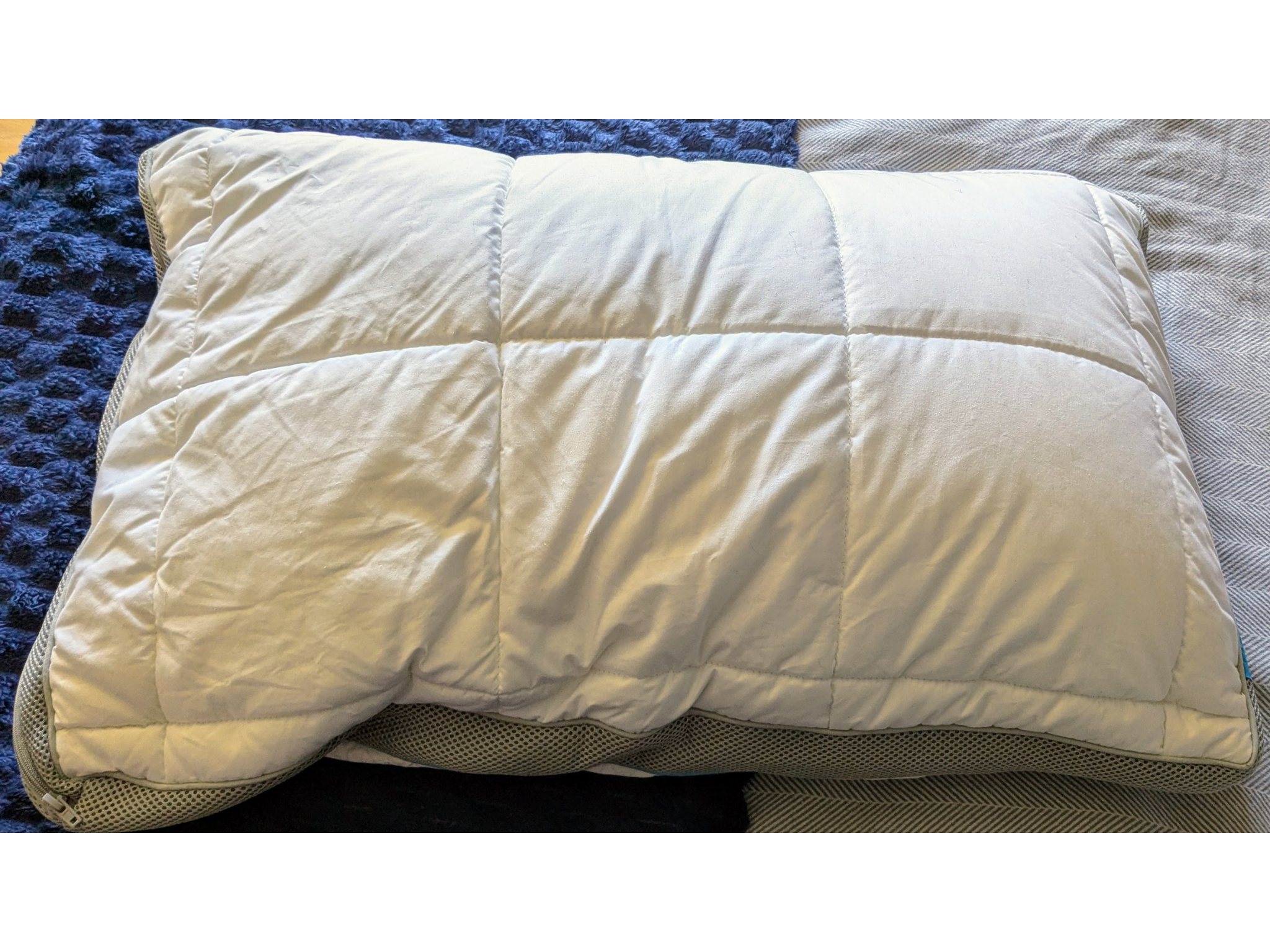
The trade-offs? You’ll need to give it a shake every so often to redistribute the cubes, and the premium price won’t suit every budget. For all-around support, adjustability and temperature control, though, it’s the most impressive product on this list.
Buy now £109.00, Simbasleep.com
Slumberdown memory foam plus pillow
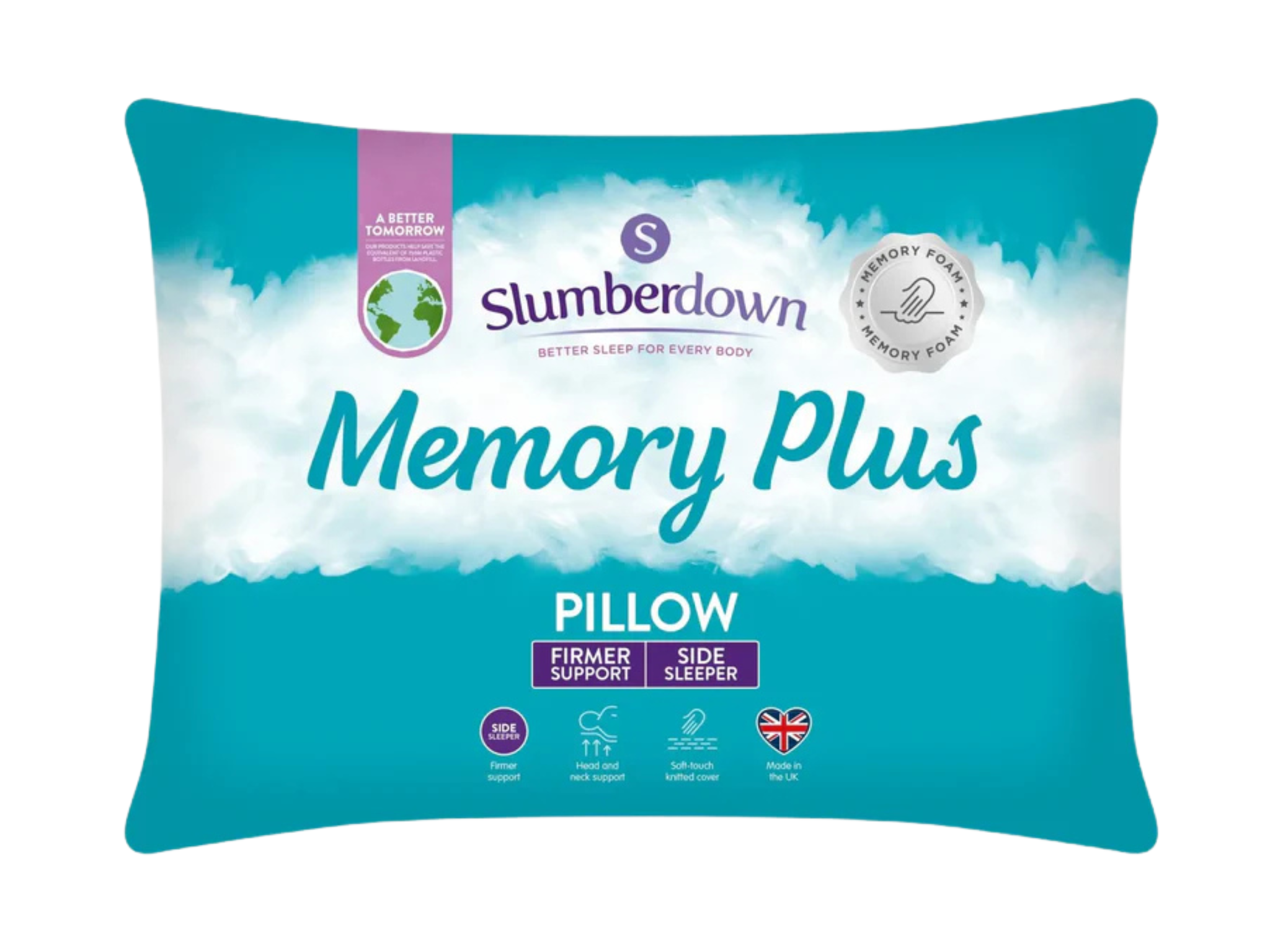
Best: Budget memory foam pillow
Size: 38cm x 64cm
Fill: Single-piece viscoelastic memory foam with hollowfibre interior
Cover: Soft‑touch polyester (non‑removable)
Care: Use a pillowcase; spot clean only; do not machine‑wash the foam
Loft: Medium‑firm; fixed profile
Why we love it
- Genuine memory‑foam support at an accessible price
- Stable, medium‑firm feel
- Non‑allergenic
Take note
- Runs warmer than ventilated or gel‑infused foams
- Fixed loft is too high for most front sleepers
- Not washable
If you’re upgrading from a lumpy hollowfibre and want real support without spending big, this is the budget pick that actually feels like memory foam. Instead of a dense slab, Slumberdown uses a memory-foam wrap around its cloud cluster fibre fill, so you get a firmer, more stable cradle with a touch of give.
In testing, it kept my neck neutral on my side and back, with no midnight sagging or morning stiffness felt in the aftermath. There are no cooling gels or perforations here, so it definitely runs warmer than pricier pillows like Simba or Tempur, but I never found it clammy and didn’t need to flip it. It isn’t adjustable, and the profile may be too large and lofty for stomach sleepers. However, for the money, the pressure relief and consistency stand out. This is an incredibly good pillow for the price.
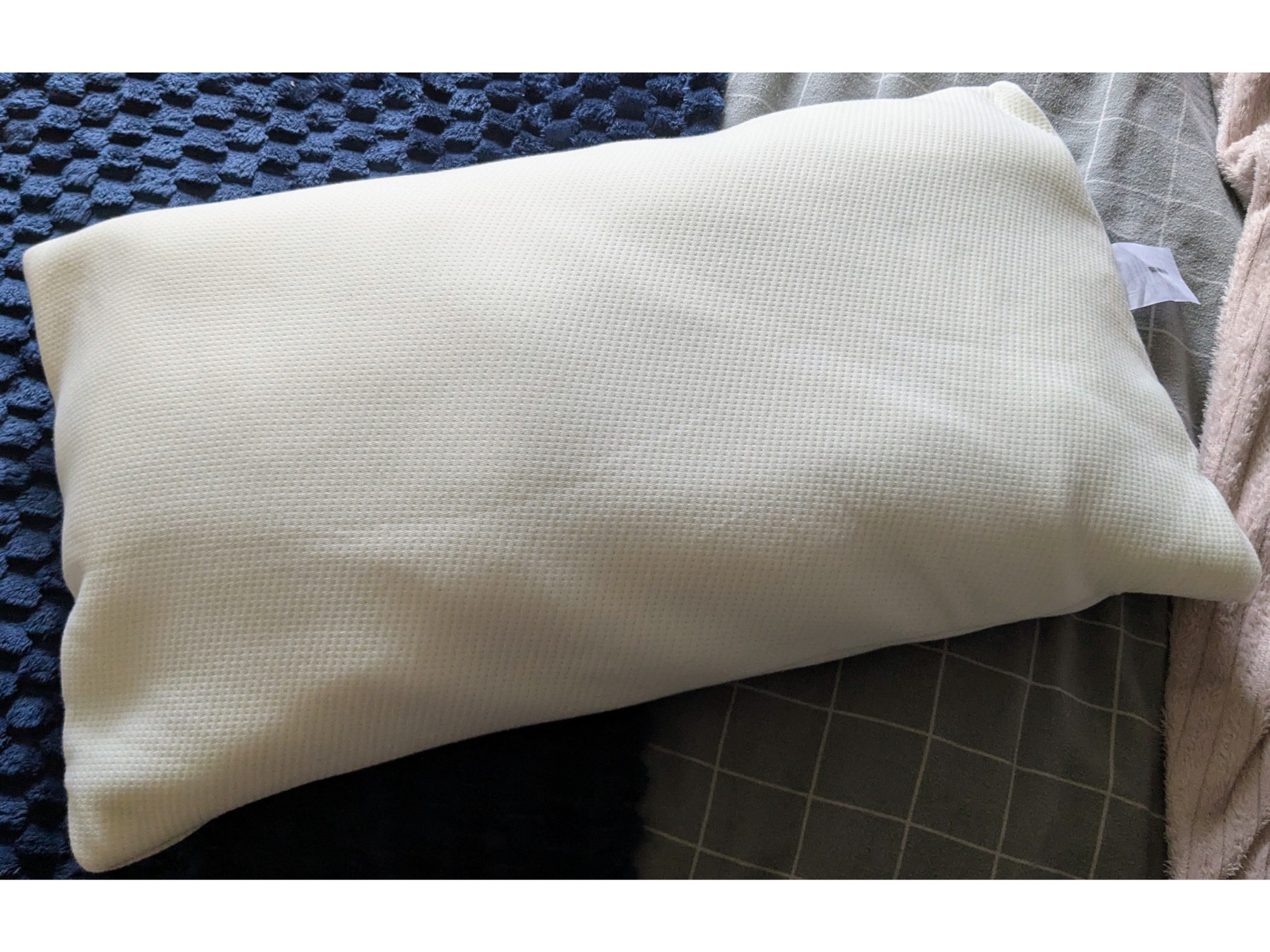
Buy now £22.60, Slumberdown.co.uk
Tempur cloud smartcool pillow
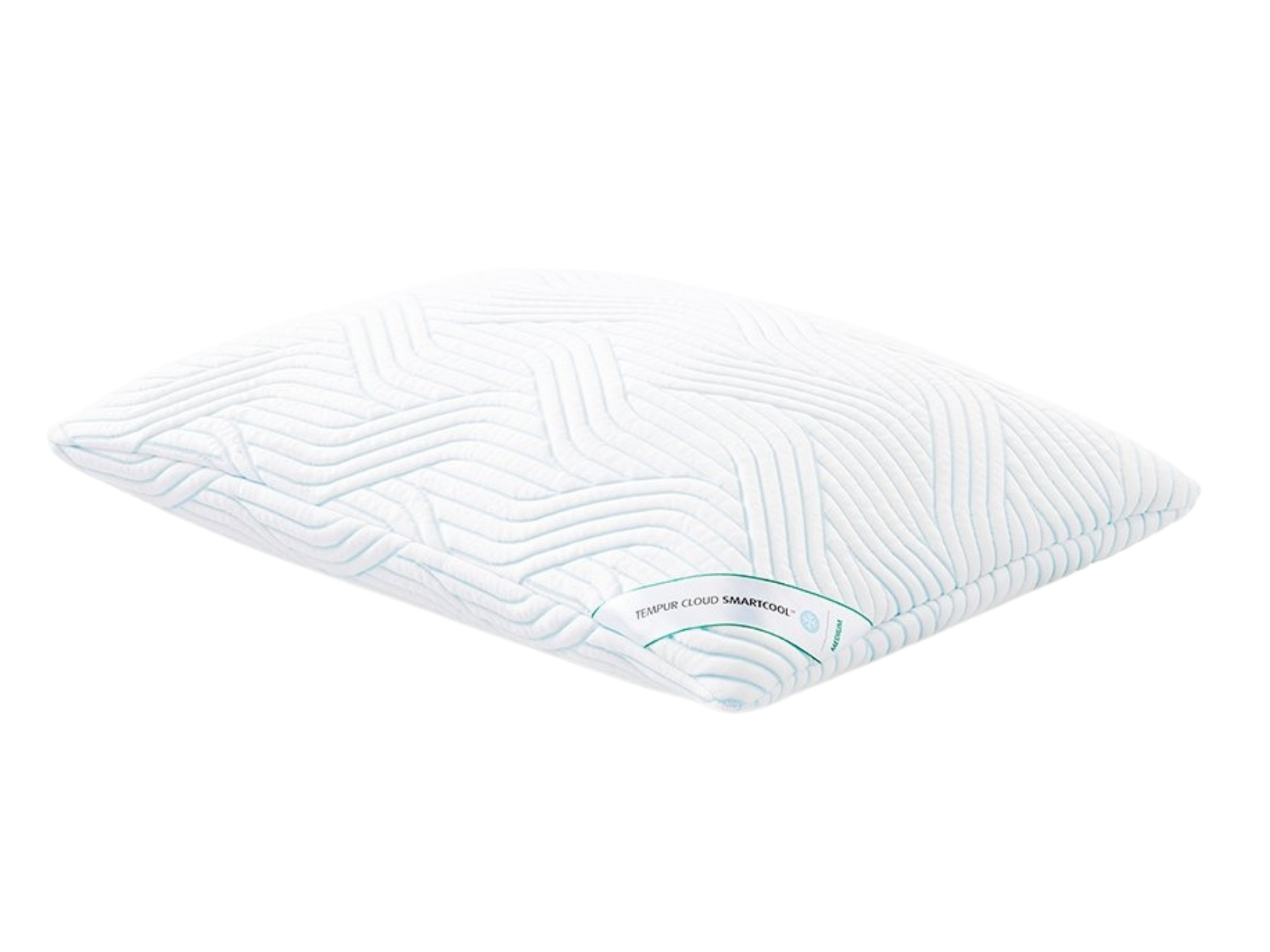
Best: Luxury memory foam pillow
Size: 50cm x 74cm
Fill: TEMPUR viscoelastic foam
Cover: 61% polyester, 38% polyethylene, 1% elastane
Care: Cover is machine-washable; foam core is not washable
Loft: Soft; low-to-medium profile
Why we love it
- Deep, even pressure relief
- Cool-touch cover tempers heat from dense foam
- Premium finish with a removable, washable cover
Take note
- Fixed loft; not ideal if you need extra height
- Runs slightly warmer than ventilated or gel-top pillows
- Pricey
Tempur’s cloud smartcool is all about pressure relief without the bulk. In testing, I felt like the extra‑soft foam let my head settle slowly and evenly, instantly easing those hotspots around the ear, jaw and neck while keeping my spine feeling neutral and supported.
The profile is low to medium, which will suit back sleepers and many side sleepers who prefer a gentler cradle; front sleepers may also appreciate the softer loft. The smartcool cover gives you that instant cool-hand feel and stays comfortable on muggy nights, though it can’t out‑breathe perforated foams or cube‑fill designs.
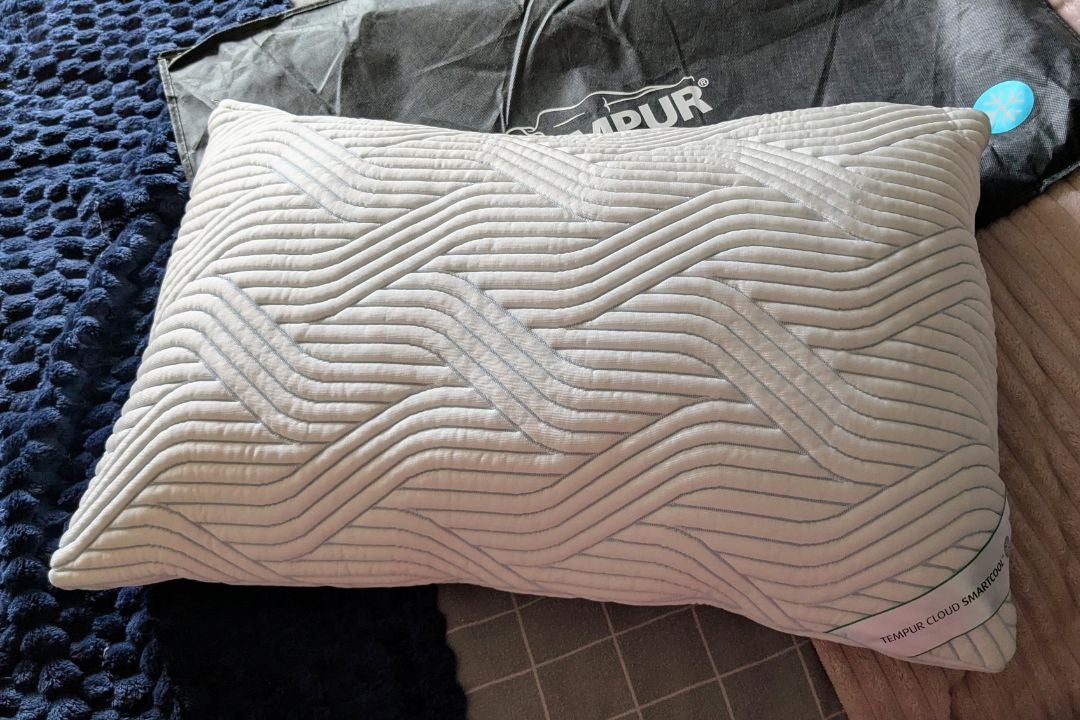
It isn’t adjustable and won’t be tall enough for broader shoulders; if you need a tunable height, the Simba hybrid is the safer bet. But for that signature Tempur “melt,” premium build and quietly excellent pressure relief, this is the most indulgent option in the line-up.
Buy now £149.00, Uk.tempur.com
Panda hybrid bamboo pillow
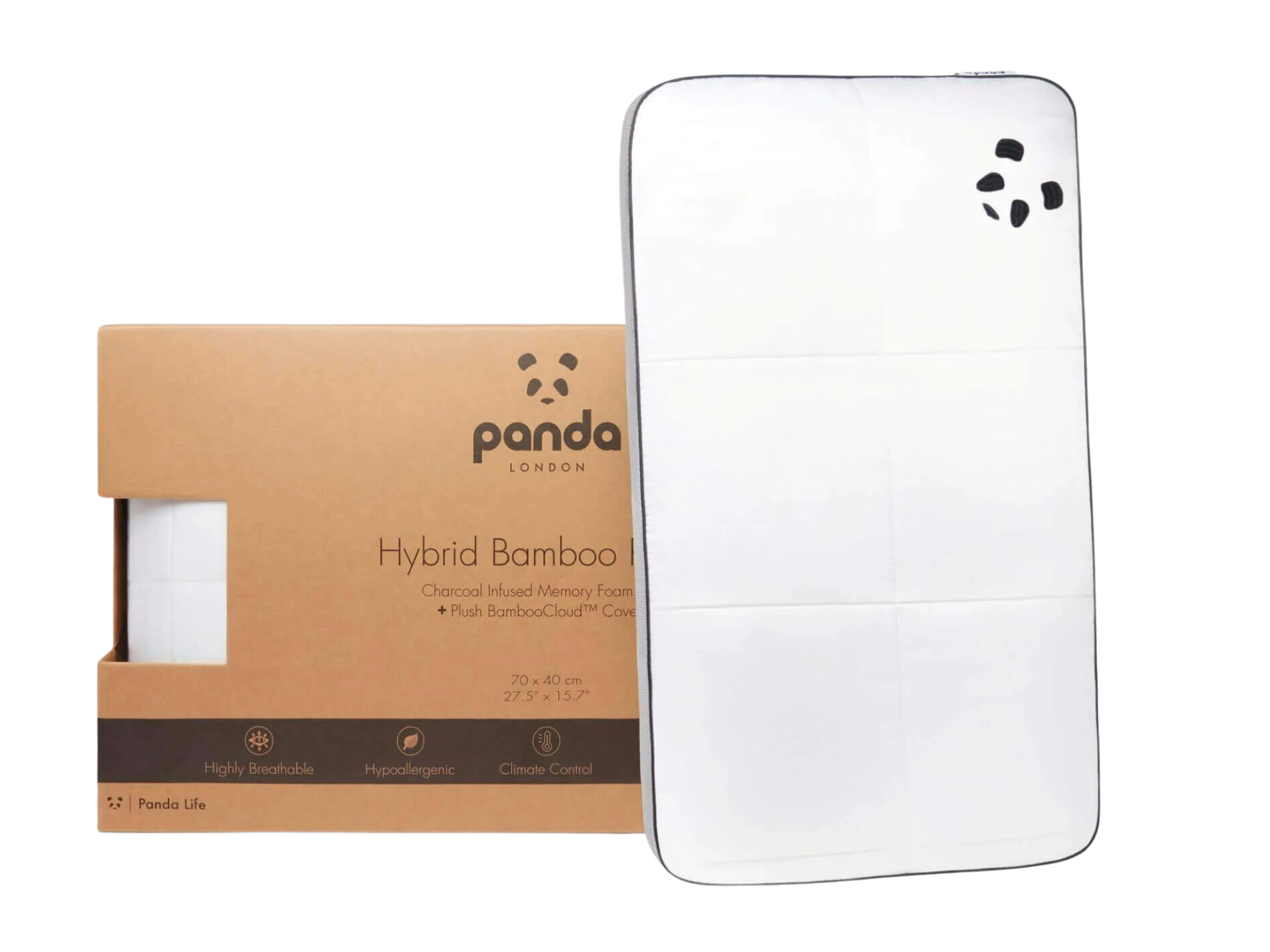
Best: Memory foam pillow for side sleepers
Size: 70cm x 40cm
Fill: Open-cell, charcoal-infused memory foam with airflow channels
Cover: Removable bamboo-derived viscose
Care: Cover is machine-washable; foam core is not washable
Loft: 13cm; medium-firm
Why we love it
- Side-sleeper-friendly loft that maintains height
- Breathable, moisture-wicking bamboo cover
- Quick-rebound foam
Take note
- Fixed loft; no adjustability
- Too firm for most stomach sleepers
- Heavier than fibre-fill pillows
Side sleepers who need reliable shoulder clearance, this is the pillow for you. The hybrid’s open-cell, charcoal-infused foam is made with ventilation channels and wrapped in a quilted bamboo-viscose cover, so it feels cooler and less “stuffy” than single-slab foams.
In testing, the 13cm profile and medium-firm feel kept my neck aligned, but with a slightly dense, brick-like feel, and it held its height through the night. Recovery is quick, build quality is excellent, and the silky, hypoallergenic cover genuinely helps on warmer nights.
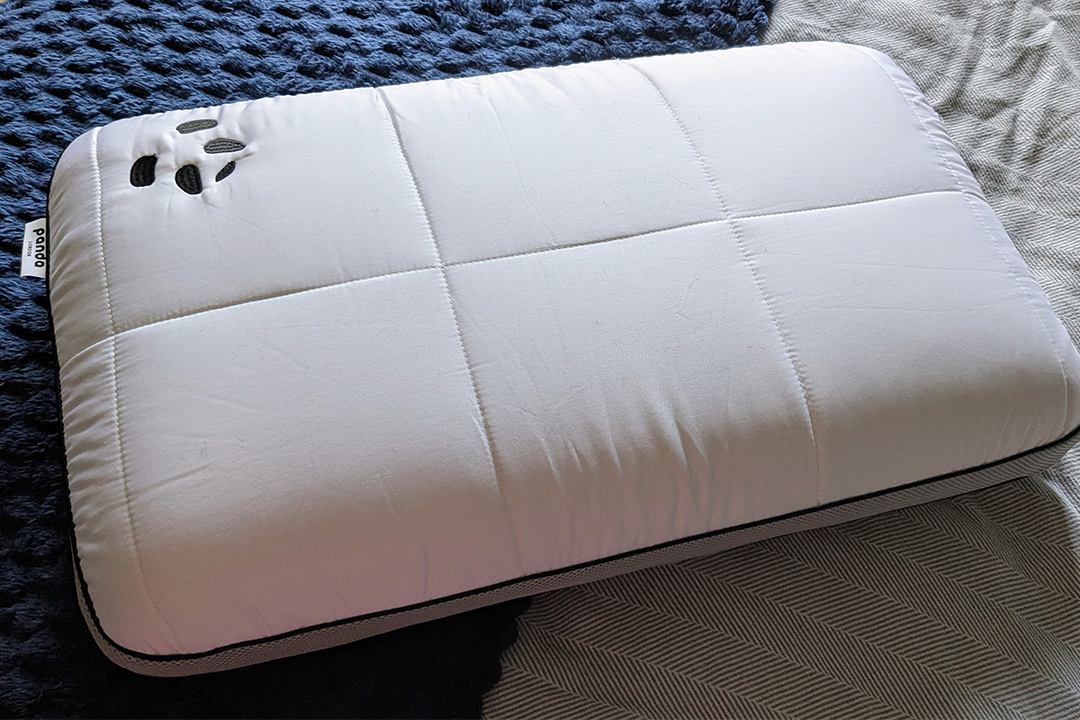
The compromise is flexibility: the loft isn’t adjustable, and the ultra-strong support won’t suit stomach sleepers. Compared with Simba’s adjustable cube-fill, the Panda is simpler and a touch firmer with a more uniform surface; versus Tempur’s cloud, it sleeps cooler and taller but feels less plush. It’s a perfect option for side sleepers, but other sleep styles should look to one of the other pillows in this guide.
Buy now £89.95, Pandalondon.com
Dreams TheraPur memory foam ice pillow
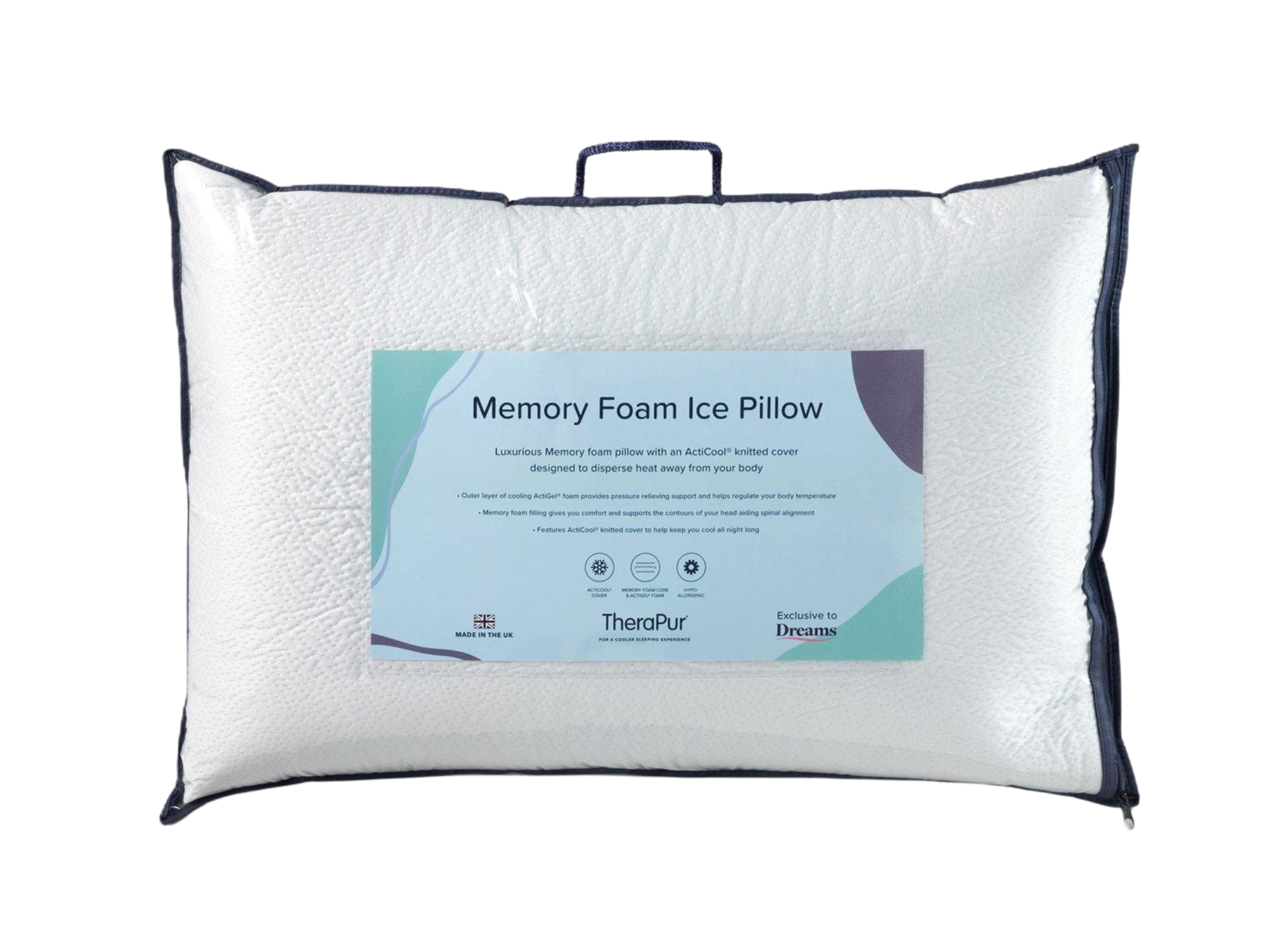
Best: Memory foam pillow for hot sleepers
Size: 74cm x 50cm
Fill: Open‑cell memory foam with cooling gel layer
Cover: Cotton; zipped and removable
Care: Cover machine‑washable; foam core not washable
Loft: Around 14cm; firm
Why we love it
- Consistently cool feel from the cover, gel layer and open‑cell foam
- Firm, stable support
- Premium construction with quick rebound
Take note
- Fixed loft; not ideal for stomach sleepers or very broad shoulders
- Heavier than fibre alternatives
- Pricey for a non‑adjustable pillow
When warm weather is your sleep nemesis, TheraPur’s ice pillow is the firm, cooling option that actually feels that way for longer. The acticool knit gives you a genuine cool-to-the-touch first impression, while a breathable, open‑cell foam core and a thin cooling gel layer help disperse warmth rather than storing it.
In testing, I flipped it far less than standard foam and never hit that midnight clamminess. Support is structured and on the firmer side, but this kept my neck neutral on my back and felt stable on my side. However, broader shoulders may want a touch more loft.
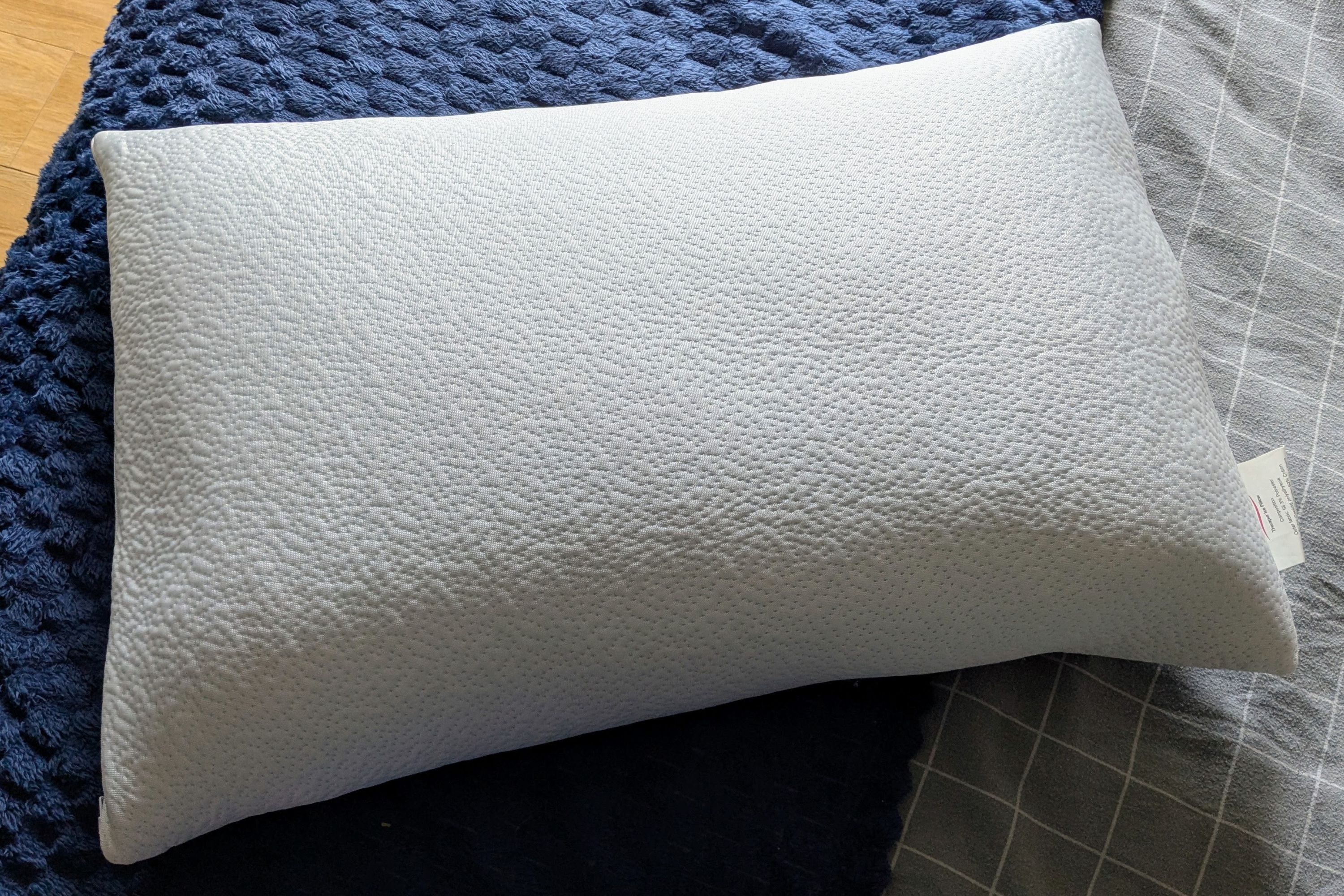
It’s a single piece with fixed height, and it’s heavier than fibre pillows, but the build quality is really excellent. Compared with Tempur’s cloud, this sleeps noticeably cooler and firmer; versus Simba’s adjustable hybrid, you trade tunable loft for set‑and‑forget cooling.
Buy now £80.00, Dreams.co.uk
Panda memory foam bamboo pillow
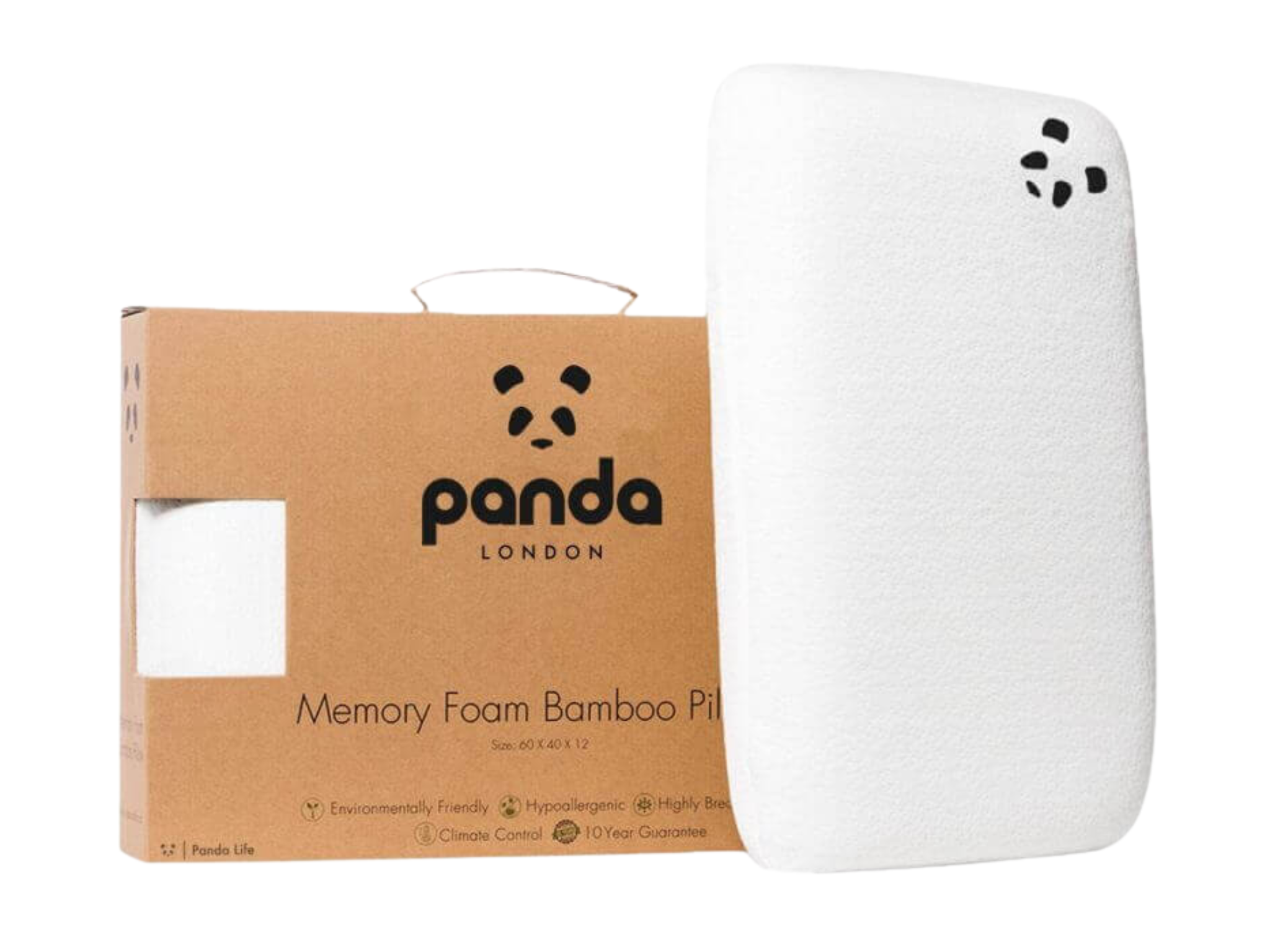
Best: Memory foam pillow for back sleepers
Size: 60cm x 40cm
Fill: Single-piece viscoelastic memory foam
Cover: Removable bamboo‑viscose blend with mesh inner
Care: Cover machine‑washable; core spot clean only
Loft: 12cm; low‑to‑medium; medium‑firm
Why we love it
- Neutral alignment for back sleepers
- Breathable, hypoallergenic bamboo cover
- Retains shape with quick recovery
Take note
- Fixed 12cm loft; may be too shallow for broader shoulders and too tall for stomach sleepers
- Sleeps warmer than ventilated or cube‑fill designs
Panda’s classic memory foam bamboo pillow hits the mark for back sleepers who want steady, no‑nonsense support. The single-piece, slow-rebound core has a medium-firm feel and a low-to-medium 12cm profile that kept my spine feeling neutral without propping my head too high. The bamboo‑viscose cover is also a highlight: it’s cool to the touch, breathable and kinder to sensitive skin than standard polyester knits.
In testing, the pillow held its shape overnight, and minor impressions vanished quickly. It isn’t adjustable, and taller side sleepers may want more loft, but as a low-maintenance option for back sleeping, it’s impressively consistent and well-made. It’s earned a permanent place on my sofa, and as a chronic pain sufferer, it’s been a godsend.
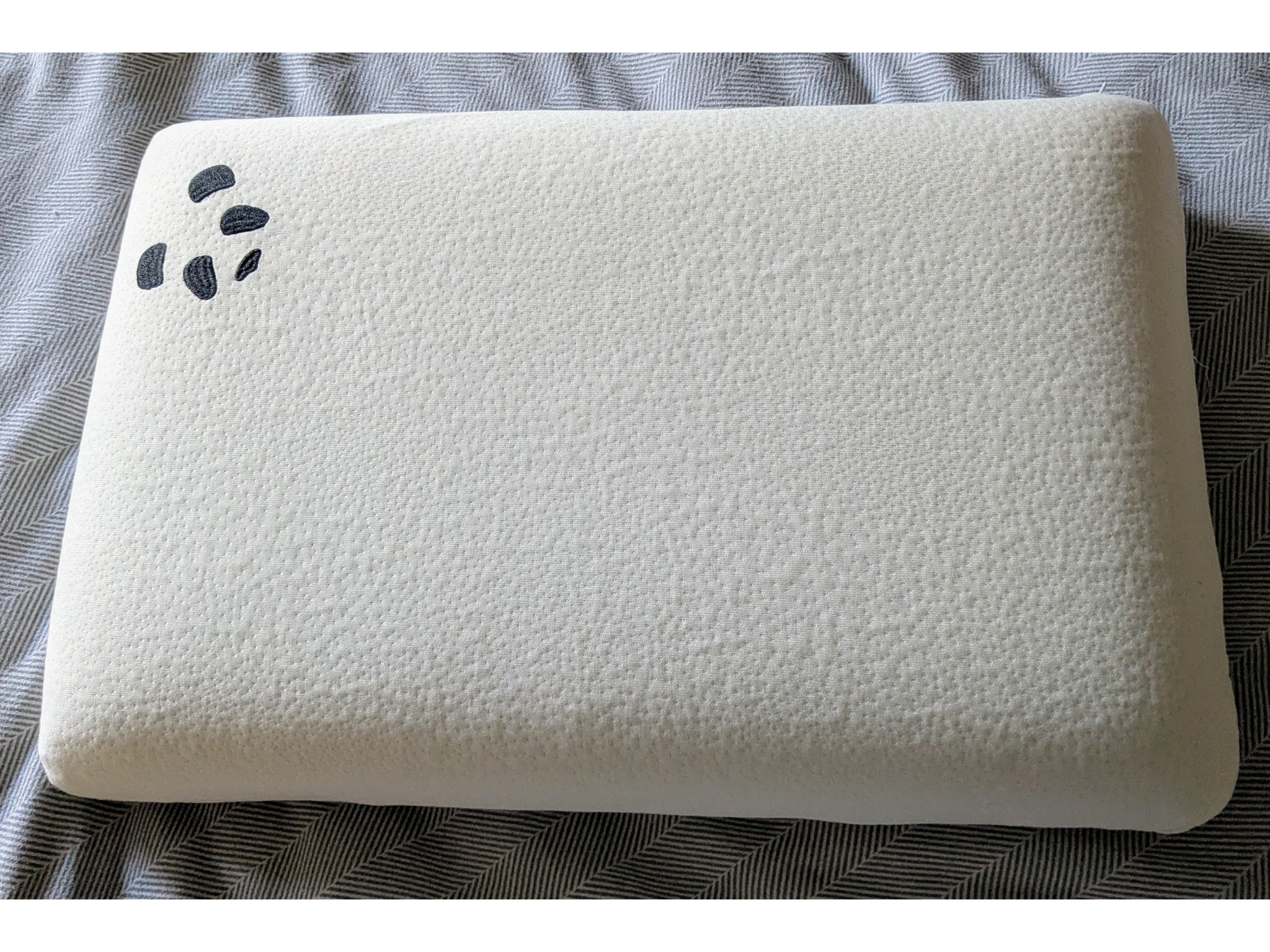
Compared with the Panda hybrid, this runs a touch warmer but feels more uniform; versus Simba’s adjustable hybrid, you lose tunable height but gain a simpler, stabler surface.
Buy now £44.95, Pandalondon.com
Your questions about memory foam pillows answered
What is the best memory foam pillow?
My best tested pillow is the Simba hybrid pillow. It's genuinely adjustable cube fill makes it easy to dial in loft and firmness for any sleep position, and the breathable cover keeps temperatures steady. However, if you’re watching your money, the Slumberdown memory foam plus is the budget pick that still feels like true memory foam. It offers consistent medium-firm support, decent pressure relief and none of the midnight sagging common at this price.
For a luxury upgrade, the Tempur cloud cooltouch gives you superb, slow‑melt contouring with a low‑to‑medium profile and a cool‑hand cover – ideal if you prioritise neck and jaw pressure relief over height adjustability. Together, these three cover the key bases: tunable support (Simba), value with credibility (Slumberdown) and premium pressure relief (Tempur).
Are memory foam pillows good for posture?
Memory foam pillows are good at conforming to the shape of your neck and head, which can stop you from sinking too far into the pillow. This added support helps to keep your cervical spine in line, which can help your posture in the long run.
Are memory foam pillows good for side sleepers?
The best type of pillow for side sleepers is either a memory foam pillow or an orthopaedic pillow. This is because those who sleep on their side can damage their spine alignment if their head is positioned either too high or too low while snoozing. Unlike feather or down pillows, memory foam ones are designed to cushion vulnerable pressure points on the head and ensure the neck remains in the optimum position.
Can you wash memory foam pillows?
Sadly, no. The motions of both dryers and washing machines can easily damage the memory foam. The good news? The pillows’ accompanying covers can normally be washed, although you’ll typically need to keep to a temperature of 30C max. Always check the label to get the lowdown on laundry.
How long do memory foam pillows last?
This one’s open for debate. In a nutshell? Not quite as long as traditional down pillows. Typically, memory foam pillows will last for two to three years, but take the time to keep an eye on the memory foam and how it feels and responds.
Are memory foam pillows comfortable during hot weather?
It’s a myth that memory foam pillows are heat magnets. Ten years ago, this was a more understandable assumption, but the memory foam used in today’s pillows is generally much more hi-tech, and typically has features such as air holes, mesh, and cooling gels or copper inlays.
Are memory foam pillows good for neck pain?
In short, yes. They’re also good for back and shoulder pain, but, obviously, this is subjective – you must take the time to read up on the pillow’s shape, the materials used and its weight, length and firmness, because all of these things can make a difference. Even the best pillow can’t cure bad neck pain; if you suffer from significant neck or back pain, you need to consult a doctor or physiotherapist.
You’ve got the pillow, now you need the duvet – read our guide to the best duvets to find the one for you







